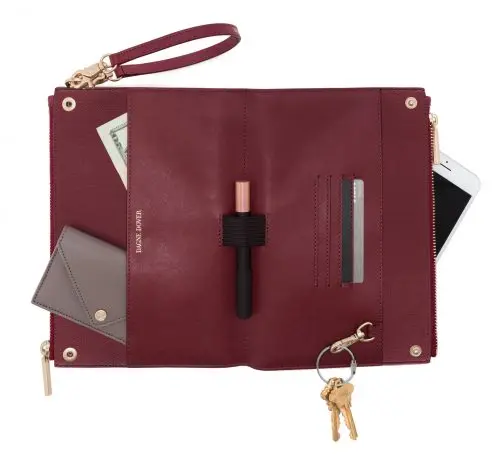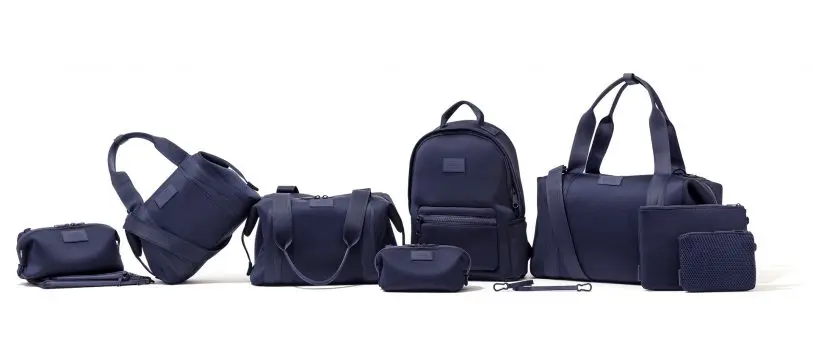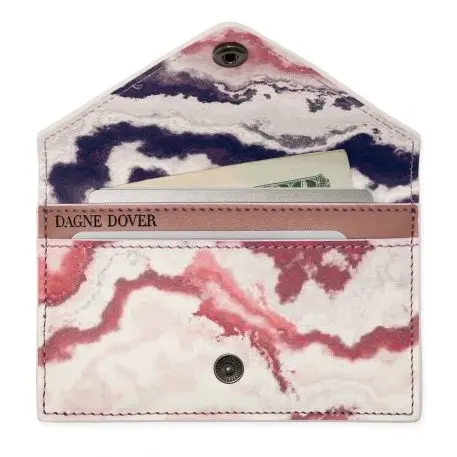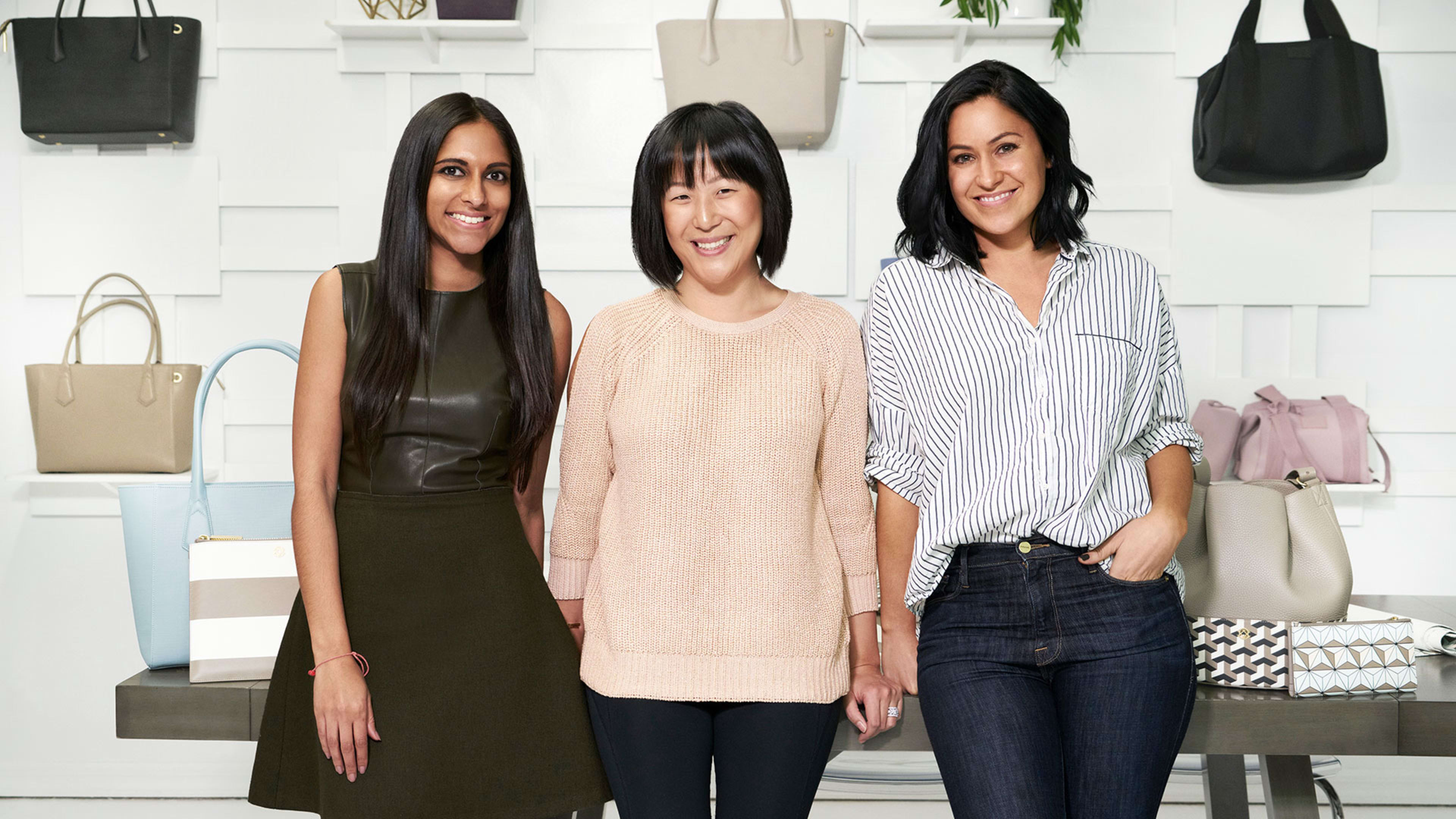Every season, hundreds of new handbag styles of all shapes, sizes, and price points flood stores, yet many women can’t find a single bag that can get them through a workday.
As I work on my annual “best work-life bag” list every year, I ask readers to share their bag gripes with me. A common one is that while women’s closets are packed with cute bags, they struggle to find one that is functional enough to get them from their first meeting to their last cocktail.
American women spend more than $11 billion on handbags a year and own, on average, 13 purses from seven different brands. Yet when you stand on a street corner in any major city in the morning, you’ll find women rushing to the office saddled with multiple bags–perhaps, a leather satchel, a gym duffle, and a lunch bag–since there isn’t a single bag in their collection that accomplishes everything. Or, on the other end of the spectrum, there are ladies who haul cavernous carry-all totes full of stuff, inadvertently yanking out phone chargers and tampons when they were just trying to find a business card at a networking event.
It’s something that Melissa Mash, Deepa Gandhi, and Jessy Dover all experienced firsthand. These millennial New Yorkers began their careers working at brands like Coach, Armani Exchange, and Club Monaco, where they learned the ropes about handbags and accessories. But even with this insider’s look into the handbag market, they still couldn’t find pieces that worked for them.
The three women had very distinct experiences. While Dover specialized in handbag design, Mash was trained in managing the business end of things, and Gandhi had experience in operations. Together, they felt they would be a bag-making dream team, so in 2013, they decided to cofound an e-commerce startup, Dagne Dover. Their goal was to create bags that were thoughtfully designed to accommodate the lifestyles of modern women who work, travel, exercise, spend time with their children, and have rich social lives. “We were three women with handbag problems who decided to do something about it,” Mash, the brand’s CEO says. “A lot of our customers connect with the fact that we’re just like them. We don’t have excessive amounts of money or anything. We’re just looking for a functional bag that also looks beautiful.”

Secrets Of Bag Designers
As consumers, the trio were frustrated by the available options. Bags didn’t have the all compartments they needed for their daily needs, like a water bottle sleeve, pockets for their phone and charger, a spot for business cards, a protective laptop sleeve. “You want to make sure that your expensive computer doesn’t get wet or scratched up,” Dover says. “You want a place for your keys, because you don’t want to be that person, at the end of the night, standing in front of their door in the dark, digging in the bottom of your bag, then dumping all the contents out.”
Mash, Gandhi, and Dover had insight into why bag makers so often failed to meet the mark. A big part of the equation is that these brands feel shareholder pressure to drive sales, which means focusing on trends, rather than thinking carefully about how women will be using the bags. “Many big accessories conglomerates are public companies,” Dover says, referring to the likes of Coach and Michael Kors. “Behind the scenes, what most people don’t realize is that most design processes at larger accessories companies aren’t that creative. Designers notice that a bag is a top seller at a competing brand, so they take the idea of that bag, flip it around a bit, change a couple of zippers, and launch it into the market, hoping it will sell just as well for them.”
Dover also points out that driving shareholder value means that the goal of many bag brands is to get women to buy as many bags as possible–for as many different occasions as possible–rather than create bags that are designed to be versatile and last a lifetime. Instead, they are trying to create bags that capture the latest trend, but will soon go out of style. In other words, they are planning for the bags to be obsolete. “We wanted to dump this thought process completely,” Dover says. “It made no sense to us, as consumers.”

Data-Driven Design
As the three women began to work on their own collection, they decided to design based on user experience, much like a software engineer might. The team surveyed more than 1,000 people, asking them what they wanted in their bags. They also carefully tracked their own personal itineraries throughout the day, week, and month, to figure out exactly what compartments women might need. Once prototypes were designed, they conducted focus groups, asking women to test the products to see how well they worked.
They set out not to create enormous bags for everything a woman could ever need, but compact, functional pieces where everything has a purpose. “Our goal was not to give women everything but the kitchen sink,” Dover says. “We want to create something that is as helpful and intuitive as an iPhone. People shouldn’t have to overthink what they put in a particular pocket: It should be obvious.”
They launched with a coated canvas tote bag ($265) and a matching clutch ($125). The larger bag was meant to carry everything a woman needed for the workday–included is a padded laptop compartment, a thermal water bottle holder, and sneakers for the gym–neatly organized into easily accessible sections. The clutch, which could be attached to the tote with a clasp, meant that you didn’t have to take everything with you if you went out to lunch or cocktails after work. But Dover, who designed the collection, also made sure that the bags were also pleasing to the eye, with clean lines, a neutral color palette, and elegant gold details.

In addition to the signature canvas line, which now includes other accessories like card cases and wallets, the brand has a more premium, fashion-forward leather line, with prices ranging from $195 to $395. This year, it launched a less expensive collection, starting at $125, made from neoprene and air mesh, that is ideal for women who need well-ventilated and moisture-wicking bags as they rush from work to the gym and back.
Dagne Dover doesn’t create new bags every season. Instead, they have a small selection of silhouettes–bucket bag, satchel, tote, cross-body–that they they are constantly working to improve. Each piece is designed to be highly functional and versatile, so a woman only ever needs to buy one. “We’re not looking to sell woman as many bags as we can,” Mash says. “We’re trying to create high-quality, long-lasting pieces that she’ll keep in her closet for years and actually use.”
That said, if a customer is looking to mix things up, Dagne Dover occasionally drops limited-edition colors of their classic designs. These end up being hugely popular: Last week, the brand launched several of its pieces in a dusty rose color that sold out immediately.

A Thoroughly Modern Business
While Mash, Gandhi, and Dover are trying to create products that they felt were missing in the market, they have learned a great deal from working at the bigger players. Gandhi, for instance, had contacts within Asian factories, so could quickly identify the best ones to work with and the best sources of high-quality materials. “Having cofounders with such diverse experiences in the industry was really beneficial to us,” Gandhi says. “It helped us avoid certain pitfalls when trying to enter this crazy world of design, manufacturing, fulfillment, and e-commerce. There are so many different nuances.”
The founders dream of growing their brand to reach the scale of some of their bigger competitors–like the Coaches of the world–but they also want to do things differently. They want to remain a digital-first company, rather than focus on brick-and-mortar retail, because this cuts down on costs and allows them to focus on delivering high-quality products. They also want to continue talking to their customers before designing and launching products, which is something that many bigger brands aren’t able to do.
Dagne Dover is now scaling fast. Between 2016 and 2017, the brand tripled its sales. But Mash says that more than just growth, the founders are very proud that buyers value the products they are crafting, as evidenced by the fact that they have a high proportion of repeat customers whose lifetime values run between $800 and $1,300.
Over 50% of customers come to the brand through word of mouth, thanks to evangelical fans of the brand. “That is scaling at an even greater rate than our paid customer acquisition,” Gandhi, the brand’s COO, says. “It’s one of the things we’re proudest of, because we believe it speaks to the strength of the product, which is something we all feel so passionately about.”
Recognize your brand’s excellence by applying to this year’s Brands That Matter Awards before the early-rate deadline, May 3.
